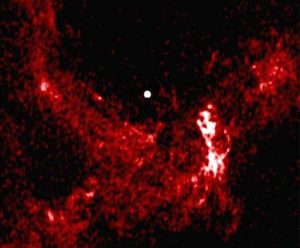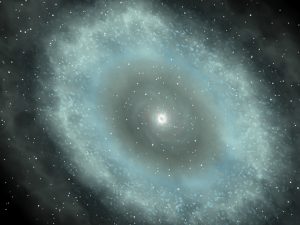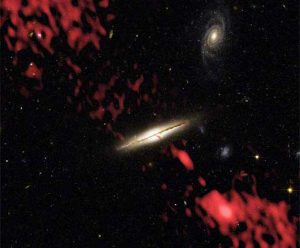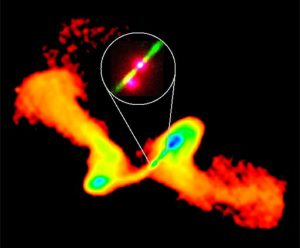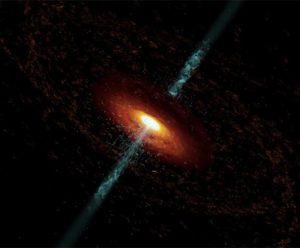Thirty years after astronomers discovered the mysterious object at the exact center of our Milky Way Galaxy, an international team of scientists has finally succeeded in directly measuring the size of that object, which surrounds a black hole nearly four million times more massive than the Sun.
Cosmic Explosions Have Common Origin
A Fourth of July fireworks display features bright explosions that light the sky with different colors, yet all have the same cause.
Giant Cosmic Lens Reveals Secrets of Distant Galaxy
An international team of astronomers has discovered that a young galaxy had a central disk of gas in which hundreds of new stars were being born every year — at a time when the Universe was only a fraction of its current age.
Giant Radio Jet Coming From Wrong Kind of Galaxy
Giant jets of subatomic particles moving at nearly the speed of light have been found coming from thousands of galaxies across the Universe, but always from elliptical galaxies or galaxies in the process of merging — until now.
Scientists Detect ‘Smoking Gun’ of Colliding Black Holes
Images from the National Science Foundation’s Very Large Array radio telescope have uncovered compelling evidence that supermassive black holes at the hearts of large galaxies collide when their host galaxies merge.
Supermassive Black Hole Mimics Smaller Cousins
Scientists have caught a supermassive black hole in a distant galaxy in the act of spurting energy into a jet of electrons and magnetic fields four distinct times in the past three years, a celestial take on a Yellowstone geyser.






